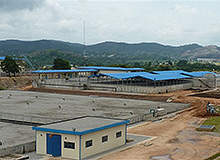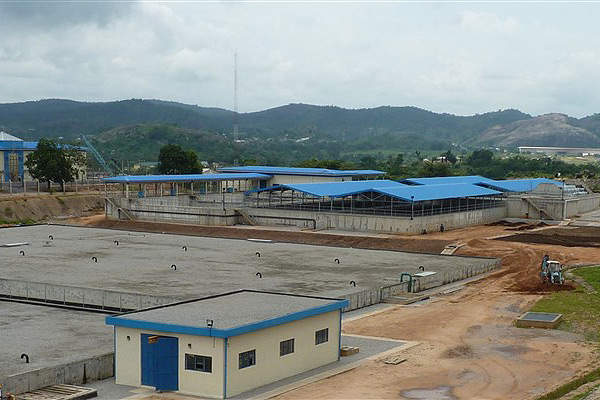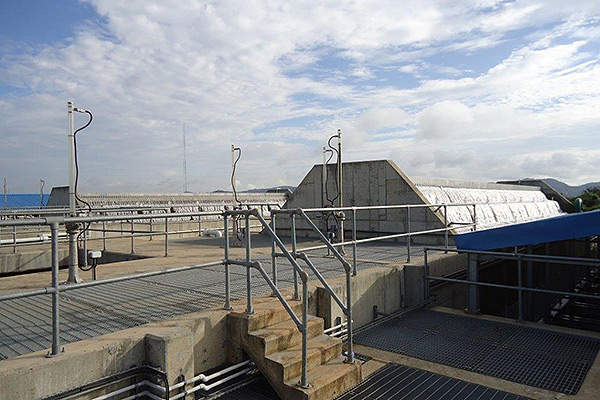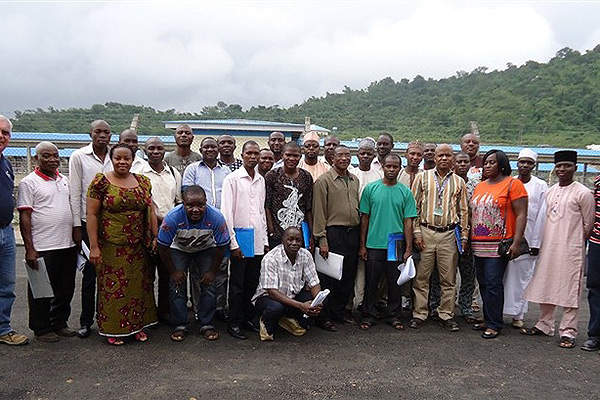
Lower Usuma Dam Water Treatment Plant (LUDWTP), located in Nigeria’s capital city Abuja, is owned by Federal Capital Territory Water Board (FCTWB). Phases 3 and 4 of the project were commissioned in September 2013. The new plants are located next to the existing phase 1 and 2 plants.
Construction works for phase 3 and 4 started in November 2011 and were executed by Biwater. The total investment on the project is estimated to have reached £60m (approximately $99m). Each of the two new plants has the capacity to process 240 million litres of water a day.
Raw water for the new plants is being sourced from the Lower Usuma Dam (LUD) reservoir, which also supplies water to the phase 1 and 2 plants, and the new Gurara Dam reservoir. The new and existing facilities now provide a combined 720 million litres of clean drinking water per day to Abuja and its neighbouring areas.
Purpose of expansion
The new treatment facilities were constructed as part of FCTWB’s efforts to improve water infrastructure and meet the required potable water needs of the territory’s growing population, which is expected to rise from five million to ten million by 2018.
Components of new plants
Each of the new plants features an aeration tank, primary lamella sludge blanket clarifiers, a rapid gravity filtration building where core treatment processes are carried out to remove contaminants and impurities, a drum screen, a chlorine contact tank, a balance tank, chemical dosing system and filter backwash water treatment system.
The project involved the construction of a common sludge treatment facility to treat the clarifier sludge from the existing plants and the new plants. The sludge treatment facility features a collection tank, sludge thickening facility, sludge drying beds and a sludge lagoon.
Other infrastructure includes an electrical sub-station with standby generation, an administration building, a workshop and supervisory control and data acquisition (SCADA) technology systems for monitoring.
Biwater connected the newly laid 3m diameter Gurara feed pipeline to supply water to the new treatment units. The pipeline is also used to boost the water supply of Lower Usuma dam reservoir. Another integrated pipeline of 1.8m diameter from LUD was also joined to the two new water treatment plants, for supplying untreated water for processing.
Technology used at LUDWTP
The water treatment technology involves aeration followed by removal of large solids implementing drum screens. The water then passes through the lamella sludge blanket clarifier / inclined-plate clarifier in place of conventional settling tanks for clarification. The technology makes use of highly compact settlers, reducing the space requirements compared with the latter by up to 90%.
This clarified water is put to rapid gravity filtration by passing it through a filter medium consisting of sand filters, by gravity or under pumped pressure. The filter removes flocculated materials trapped in the sand.
Then the water is disinfected in the contact tank with chlorine and goes through chemical dosing using aluminium sulphate, lime, polyelectrolyte and chlorine.
Sand filters are cleaned by backwashing, which involves reversing the direction of the water and adding compressed air.
The by-product or sludge from the purification process is then treated through an integrated sludge treatment plant.
The sludge treatment plant comprises of the collection tank where all the sludge from the four facilities is collected, thickened, dewatered and dried on concrete drying beds before conveying it to sludge lagoons.
Related content
QGC’s Kenya Water Treatment Plant, Queensland, Australia
Kenya Water Treatment Plant (KWTP) is a new water treatment plant constructed as part of the Queensland Curtis LNG (QCLNG) project of QGC.
Tahuna Waste Water Treatment Plant Upgrade, New Zealand
The upgrade of the Tahuna Waste Water Treatment Plant (WWTP) located in Dunedin, New Zealand, was completed in January 2013.






